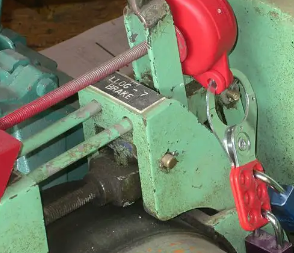Every day, spanning a multitude of industries, normal operations are put on hold so that machinery/equipment may undergo routine maintenance or troubleshooting. Every year, compliance with the OSHA standard for controlling hazardous energy (Title 29 CFR §1910.147), known as ‘Lockout/Tagout’, prevents an estimated 120 fatalities and 50,000 injuries. Still, improper management of hazardous energy can be attributed to almost 10% of the serious accidents across several industries.
Machinery/equipment must be properly shut down in order to ensure worker safety—but this process involves more than simply hitting the off switch, or even disconnecting the power source. As with all workplace safety categories, knowledge and preparation are the keys to success. Here are the main elements to consider for Lockout/Tagout:
Employees must be properly trained so that they know and understand the OSHA standards; employees must be made aware of their employer’s energy control program and which elements are relevant to their personal duties
Employers must maintain and adequately enforce a lockout/tagout energy control program and must inspect energy control procedures at least annually
Only use properly authorized lockout/tagout devices
Lockout devices, whenever possible, are favored over tagout devices; the latter may only be used if they provide equivalent protection or if machinery/equipment is not capable of being locked out
Always make sure any lockout/tagout device identifies the individual user; ensure that the device is only removed by the employee who applied it
Each piece of equipment must have a written Hazardous Energy Control Procedure (HECP), specific for that piece of equipment, detailing how to control all sources of hazardous energy for that piece of equipment. This is the procedure that Authorized Employees must follow when placing equipment under LOTO

Post time: Jul-28-2022

